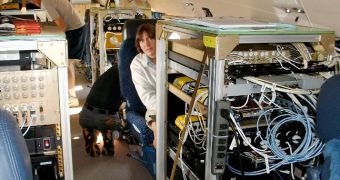As part of a study aimed at understanding hurricanes, three students at the Purdue University are continuing to fly over the Atlantic Ocean, collecting data on tropical storm Gaston.
The formation is now yet fully structured, and this is precisely what makes it such an important target for study. Researchers say that they want to learn what promotes or hinders hurricane formation.
Some of the largest tropical storms develop into hurricanes, which make landfalls, create twisters and tornadoes, produce incredibly fast winds, and generally wreak havoc on the land.
Conversely, some of them simply fizzle out before they can do any damage, even if they resembled those in the first category when they started out.
Knowing the factors that influence which path a tropical storm takes is of paramount importance for knowing how to prevent further devastations, similar to the ones produced by Hurricane Katrina.
NASA is interested in this, and has a team ready to fly into forming tropical storms. The US National Science Foundation (NSF) is also interested, and the Purdue team is funded by the organization.
Graduate students Alexandria Johnson, Brian Murphy and Paytsar Muradyan are currently flying above the Atlantic, in a bid to understand tropical depression Gaston, which is currently developing.
Their NSF-funded research effort, dubbed Pre-Depression Investigation of Cloud Systems in the Tropics, is scheduled to end later this month, on September 30.
Purdue professors Jennifer Haase and James Garrison are leading the student team. Hasse is an assistant professor of earth and atmospheric sciences, while Garrison is a professor of aeronautics and astronautics.
“Often hurricanes originate in storm systems that develop off the west coast of Africa, but it is very difficult to predict which storm systems will develop into a hurricane and which will produce thunderstorms and then dissipate,” Haase explains
“We are flying into these areas to make measurements and try to figure out what conditions lead to the development of a hurricane,” she adds.
The group uses a newly-developed instrument called the GPS Instrument System for Multistatic and Occultation Sensing (GISMOS), in order to measure satellites signals entering Earth's atmosphere.
Small variations can be discovered in these signals as they pass through various atmospheric conditions. Analyzing these minute differences could provide the breakthrough the researchers need.
“We hope to make it possible to forecast hurricanes further in advance, for example five days rather than the current two or three,” Haase explains.

 14 DAY TRIAL //
14 DAY TRIAL //